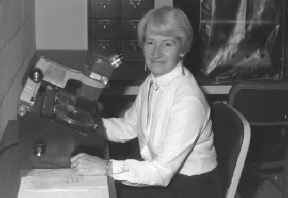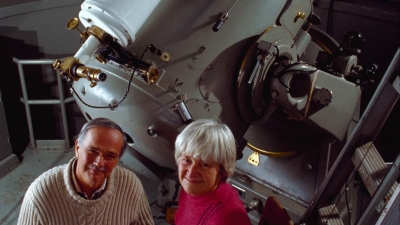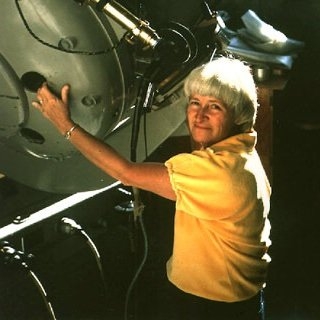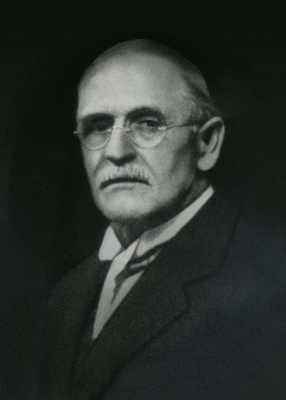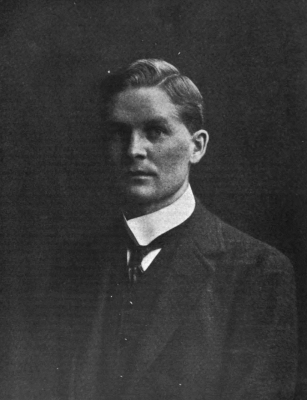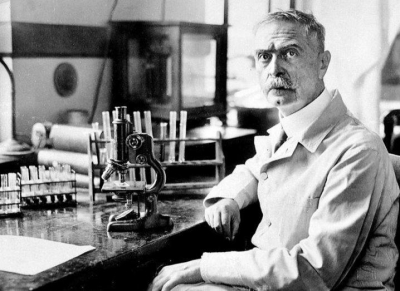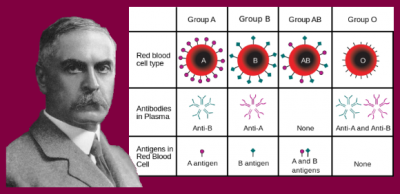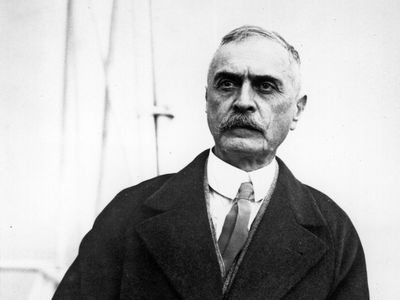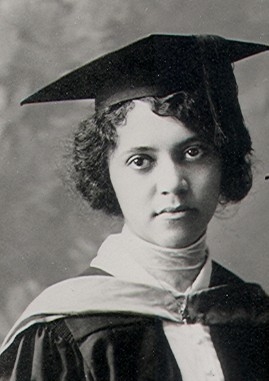
Alice Augusta Ball
Alice Augusta Ball (1892-1916) was an African American chemist who developed an injectable oil extract, the first successful treatment for leprosy. It was used until the 1940s. However, she did not get credit for her discovery for nearly 90 years. Some attribute this to gender and racial discrimination.
Ball was born in 1892, in Washington. Ball earned her bachelor's degree in pharmaceutical chemistry from the University of Washington, and her master's degree from the College of Hawaii (now known as the University of Hawaii), in 1915. Alice Ball was the first woman and first African American to receive a master's degree from the University of Hawaii and the first woman chemistry professor at the university. In her postgraduate research career at the University of Hawaii, Ball investigated the chemical makeup and active principle of Piper methysticum (kava - a herbal plant grown in the Pacific islands) for her master's thesis.
Impressed with her work, Dr. Harry T. Hollmann, a doctor at the Kalihi Hospital in Hawaii that treated patients with leprosy, reached out to Ball to isolate the active chemical compounds in chaulmoogra oil Chaulmoogra oil had previously been used in the treatment of leprosy with mixed results and severe side effects.
Balls succeeds
In less than a year, Ball developed a technique that would allow the oil from chaulmoogra tree seeds to become injectable and absorbable by the body. She was just 23 years old then. Her newly developed technique involved isolating ethyl ester compounds from the fatty acids of the chaulmoogra oil. This isolation technique, later known as the Ball Method, was the only pain-free treatment for leprosy available for over 30 years until sulfone drugs were introduced.
Unfortunately, Ball died in 1916, at the young age of 24, before publishing her findings. The president of the College of Hawaii, Dr. Arthur Dean, continued and published Ball's research without giving her credit for the discovery. Dean even called the treatment, "Dean Method."
Ball's name might have been completely forgotten but thanks to Dr. Hollmann, who in a 1922 medical joumal credited Ball for creating the chaulmoogra solution and referred to it as the "Ball Method. Even so, Ball remained largely forgotten until 2000, when the University of Hawaii placed a bronze plaque in front of a chaulmoogra tree on campus to honour Ball's discovery.
Inge Lehmann
Inge Lehmann (1888-1993) was a Danish seismologist who discovered that the Earth has a solid inner core inside a molten outer core. Inge Lehmann was born in Copenhagen in 1888. In 1907, she started her studies in mathematics, chemistry and physics at the University of Copenhagen, but had to drop out due to poor health. She finally completed her degree in physical science and mathematics in 1920. In 1925, Inge Lehmann became an assistant to the head of the Royal Danish Geodetic Institute. Her work involved setting up seismological observatories in Denmark and Greenland. She became interested in seismology and went on to study geodesy (the science) of making measurements related to Earth) formally at the University of Copenhagen and received her post graduation in the subject in 1928. Inge Lehmann was appointed the state geodesist and was made the head of the Seismological Department of the Royal Danish Geodetic Institute. She was responsible for running seismographic observatories in Copenhagen and Russia.
Study on Earth's core
In 1929, while examining seismograph data from a New Zealand quake, Lehmann noticed oddities in the wave patterns. The seismographs in Russia collected seismic waves with amplitudes that were higher than expected and some seismic waves travelling away from the earthquake's focus appeared to have been bent." She concluded Earth's interior must consist of a solid inner core and a liquid outer core and the waves were being refracted and reflected at the boundary between these two layers. In 1936, Lehmann published her findings in a paper.
It was not until 1970 that seismologists tested Lehmann's proposal. The boundary between the inner and outer core, which occurs at a depth of roughly 5,100 km is known as the Lehmann discontinuity. Lehmann retired from her position at the Geodetic Institute in 1953, but continued her scientific research. In 1987, aged 99, she wrote her last scientific article!
Tu Youyou
Tu Youyou is a Chinese scientist, known for her isolation of the anti-malarial substance artemisinin. She won the 2015 Nobel Prize for Physiology or Medicine (shared with Irish-bom American parasitologist William Campbell and Japanese microbiologist Omura Satoshi). Tu was born in Ningbo, Zhejiang, China, in 1930. A tuberculosis infection at 16 interrupted her education for two years, but inspired her to pursue medical research. In 1955, Tu graduated from Beijing Medical University School of Pharmacy and continued her research on Chinese herbal medicine in the China Academy of Chinese Medical Sciences. After graduation, Tu worked at the Academy of Traditional Chinese Medicine in Beijing. Project 523
Secret mission
In 1967, during the Vietnam War, North Vietnam requested China to help battle malaria, which was affecting its soldiers. Tu was appointed to lead Project 523, a secret effort to find a ticalment for malaria. Tu and her team pored over ancient Chinese medical texts to identify plants with appropriate medicinal value. The target was to remove the malaria-causing Plasmodium parasite from the blood of infected people. In 1971, after refining the extraction process, Tu and colleagues successfully isolated a nontoxic extract from sweet wormwood that effectively eliminated the Plasmodium parasite from mice and monkeys. In 1972, they isolated the active compound in the extracts, which they named qinghaosu, or artemisinin. Tu and two colleagues tested the substance on themselves before testing it on 21 patients in Hainan Province. All of them recovered. Her work was not published in English until 1979. The World Health Organisation invited Tu to present her findings on the global stage in 1981. It took two decades, but finally the WHO recommended artemisinin combination therapy as the first line of defence against malaria.
Awards
In 2011 she received the Lasker-DeBakey Clinical Medical Research Award for her contributions to the discovery of artemisinin. When she won the Nobel in 2015, Tu became the first Chinese Nobel laureate in physiology or medicine and the first female citizen of the People's Republic of China to receive a Nobel Prize in any category.
Maria Mitchell
Maria Mitchell (1818-1889) was an American astronomer who is known for discovering Miss Mitchell Comet. She was the first professional woman astronomer in the United States and the first woman elected Fellow of the American Academy of Arts and Sciences and the American Association for the Advancement of Science. Mitchell was born in Nantucket, Massachusetts in 1818. Her interest in astronomy was stimulated when her father, who was a schoolteacher and amateur astronomer, encouraged her to use his telescope independently. She also got to operate a number of astronomical instruments including chronometers, sextants, simple refracting telescopes, and Dollond telescope at a young age. In 1835, Mitchell opened her own school, where she implemented experimental teaching methods. A year later, she became Nantucket Atheneum's first librarian, where she worked till 1856. Simultaneously she was pursuing her interest in observing the night sky. As an amateur astronomer, she studied solar eclipses, the stars and the planets.
Comet discovery
In October, 1847, Mitchell discovered a comet using a Dollond refracting telescope. The comet later became known as "Miss Mitchell's Comet". During those years, the king of Denmark, King Frederick VII gave gold medals for anyone who had telescopic comet discoveries. Maria Mitchell became the first woman to receive this medal and the second woman to discover a comet (first being Caroline Herschel). After this discovery, Mitchell gained popularity worldwide and was recognised for her contribution to astronomy. Today, the official designation of this comet is C/1847 T1.
In 1849, Mitchell became a computing and field researcher for the U.S. Coast Survey. She tracked the positions and movements of planets to give sailors data for navigation.
In 1865, though Mitchell did not have a college education, she was appointed professor of astronomy at Vassar College. She became the first female professor of astronomy. She later became the director of the Vassar College Observatory and edited the astronomical column of Scientific American. Mitchell and her students began photographing sunspots in 1873 and these were the first regular photographs of the sun.
Picture Credit : Google
